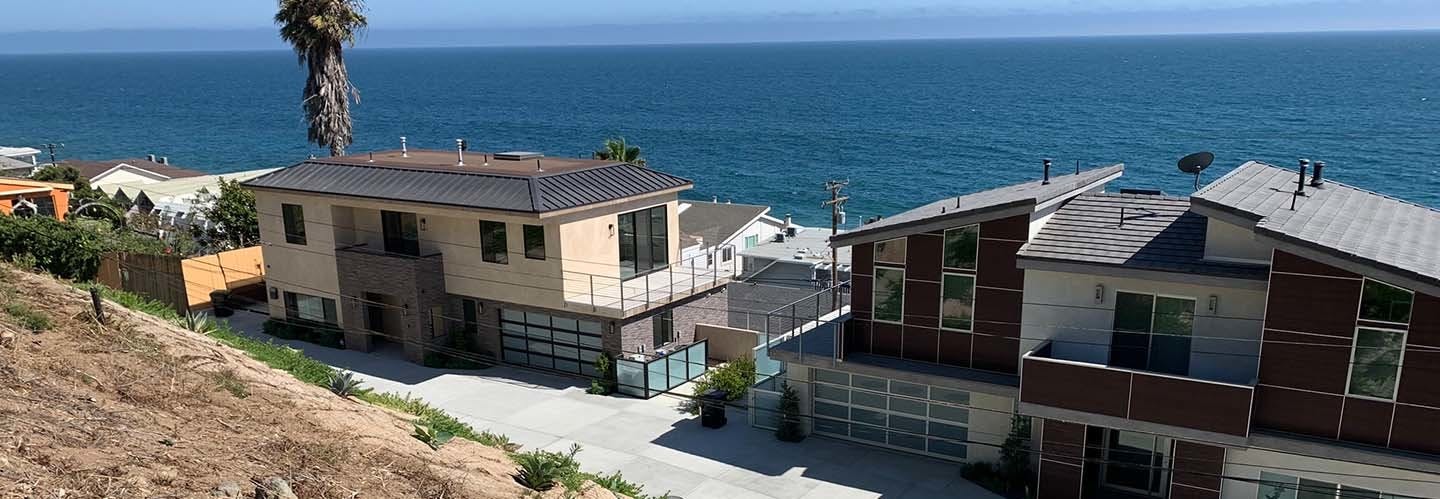Combining Engineered Earth Armoring Solutions with Onsite Wastewater/Greywater Treatment Systems
Posted on 1.31.2022 by Jeff Hoilman, P.E.
The increasing need for sustainable design coupled with droughts and water shortages have resulted in increased implementation of onsite wastewater treatment systems among residential and commercial developments. Even non-arid regions, like the Southeast, are not exempt from water shortages. Population growth is also driving water demand in many of the nation’s most water-scarce regions, including Arizona, California, Florida, Nevada, and Texas. As an innovative way to save water, some state and local governments are incentivizing the use of onsite wastewater treatment systems to recycle greywater.
Greywater is lightly used water from bathroom sinks, showers, bathtubs, and clothes washers. It does not include wastewater from toilets and is generally safe to handle and reuse for landscape or crop irrigation.
Reusing greywater as irrigation can be done using drip systems and/or spray distribution. These types of systems are designed to work in areas that are difficult to access or where steep slopes exist. Reusing greywater to establish vegetation on steep slopes can reduce erosion and sediment impacts, promote groundwater recharge, increase water quality, improve aesthetics and increase property value. One study commissioned by the city of Santa Rosa, CA, found that a “laundry-to-landscape” greywater system could save 15 gallons of water per person, per day.
Propex’s engineered earth armoring solutions can be used in conjunction with greywater irrigation systems to provide optimal slope stabilization and/or prevent erosion. Combing these two systems has been successfully used on residential and commercial properties.
In 2019, a developer purchased two homes located adjacent to one another near Coral Beach in Malibu, CA with the intent to renovate and resell both structures.
A 1:1 unvegetated slope was located behind the homes. Pacific Coast Highway 1 runs along the top of the slope. Due to runoff from the highway, the slope was experiencing severe erosion. The erosion was depositing sediments onto the driveway utilized by both residences. See Figure 2. Ultimately the sediment would eventually enter the closed stormwater system during precipitation events. If this continued, these sediments would impact the hydraulic capacity of the sewer system, reduce water quality, and increased maintenance costs to the City of Malibu.
To incorporate sustainability into the renovation, improve aesthetics, prevent further erosion, and ultimately increase property values, the developer installed a drip and spray irrigation system using greywater to provide irrigation on the steep slope. To further protect the slope and the investment of the irrigation system, the developer used ARMORMAX to protect the slope from further erosion. See Figure 3.
ARMORMAX is a solution for severe erosion and/or surficial slope stabilization that provides vegetated reinforcement, improves the factor of safety, and significantly reduces the probability of failure. The system is composed of Engineered Earth Anchors that are designed and tested for compatibility and performance with our PYTAMAT 75 High-Performance Turf Reinforcement Mat (HPTRM) to increase slope stability for up to 75 years. The system also uses metal securing pins to temporarily hold the HPTRM in place.
The PYRAMAT 75 component is a homogenous woven HPTRM that provides erosion protection from overland slows while promoting the establishment of vegetation. The homogeneous construction of PYRAMAT 75 allows for the material to be easily cut to accommodate landscape plantings, drip lines, spray irrigation heads and other protrusions. While the HPTRM component can be cut, it is suggested that the irrigation piping, drip lines, and spray irrigation heads be installed prior to placement. Landscape plantings can be installed post installation of the ARMORMAX system. See Figure 4.
Figures 5 and 6 illustrate progressive vegetation.
Since the installation of this project, the City of Malibu and other local municipalities are encouraging developers and builders to install onsite wastewater treatment systems along with the ARMORMAX system. The combination of these technologies offers a sustainable way to save water while simultaneously reducing O&M costs to the city by eliminating sediment deposition into the stormwater system. Additionally, ARMORMAX is more cost-effective and has a significantly lower carbon output than traditional hard armoring solutions like rock riprap. Vegetation quickly established and continues to flourish two years later. The slope is stabilized and there is no longer erosion or sediment deposition. Figure 7 shows the vegetated reinforced section of the slope behind the renovated homes as compared to the bare, unprotected section of the slope behind the neighboring homes.
Combining ARMORMAX with an onsite wastewater treatment system that recycles greywater into irrigation has resulted in the establishment of vegetation, groundwater recharge, improved water quality and lower O&M costs through the reduction of sediment loss. Ultimately this has also improved aesthetics and increased home property values for the developer and homeowners.
Interested in PFAS-Free Plastics?

